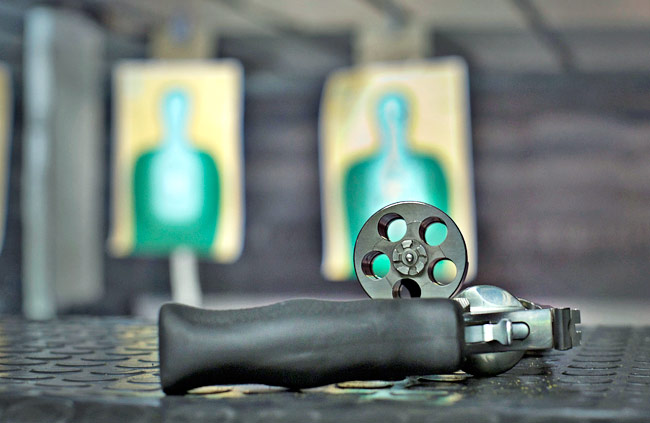Life in the United States has, for long, been punctuated by the play of laws relating to firearms and for which several Presidents were at the receiving end. Now surprisingly it seems that India, too, carries with it slurs of a similar kind as some of the nation’s top figures— including Mahatma Gandhi and Indira Gandhi — were gunned down. Yet on the surface it is somewhat unbelievable that, as some reports pointed out this week, India is next only to the US in the extent of possession of firearms by the civilian population.
As per these reports, there has been a major rise in the possession of firearms by civilians in India in recent years. Overall, global records do not give reassurance for a peaceful existence for mankind. According to these records, the world possesses one billion firearms, nearly 140 million more than the corresponding figure for 2007. More surprisingly, the bulk of these are possessed not by fighting military, police or other security forces, but by civilians. This, a global small arms survey noted, was in the ratio of 85 per cent for civilians and a bare 15 per cent for the fighting governmental forces. Without doubt, such a scenario is to be seen in the context of the militant, extremist, fundamentalist offensives, even granted that what these fighters own might not necessarily be part of the recorded stocks. While the United States was dominant in civilian ownership in 2007 and 2017, the report said the US is only fifth today in military firearms holdings, behind Russia, China, North Korea and Ukraine. It is also fifth in law enforcement holdings, behind Russia, China, India and Egypt.
The Small Arms Survey released its study to coincide with the third UN conference to assess progress on implementing a 2001 program known as Prevent, Combat and Eradicate the Illicit Trade in Small Arms, which includes marking weapons so they can be traced. The conference opened Monday and ends June 29.
Civilians in our country own as many as 71 million legal and illicit firearms. Notably, India was among the nations where peace used to prevail for most parts. Earlier, law and order was mostly under control except for the festering wounds as in Kashmir, violence in some of the Maoist-affected areas and scenes of militancy in pockets of the North-East. That scenario has, however, drastically changed over the past few years.
A gun-running culture does exist here and that is just not limited to Bihar or UP any more. Communal situations are generally out of control for the past years. It is unsafe to assume that the massive bloodletting in Gujarat in 2002 and subsequent incidents, among other factors, have forced people to go in for gun licences on a large scale. Add to this the general sense of insecurity not only among the rich but also the middle class, to whom institutional security cover is a far cry unlike the politicians and bureaucrats holding governmental positions. The police forces are mostly not being of much help to ordinary citizens in safeguarding their personal safety and security.
The situation this creates – of citizens wielding guns on a large scale, somewhat similar to the situation in the US — is scary. The society is sitting plum on a volcano of fireworks. Where or when a situation could go out of control is a matter of pure guesswork. Only solace may be that an armed revolution with political or economic reasons, like we see in Africa or South America, is a far cry for the comfort-seeking middle class in India. No concerted civilian movement may be possible. On the other hand, presence of such a large numbers of weapons is definitely a matter of worry for the law enforcement agencies. Luckily, they too do not get pressed into service to safeguard common citizens. Their agenda is safety of only the sensitive class of people who are of minimal consequence to the people at large.
With the police forces increasingly being found wanting in the discharge of their duties, this feeling of insecurity will only grow over the years. Sooner or later, this society will be made to pay a heavy price for such obsessions.
Even then, as the global small arms survey suggests, six out of every 100 individuals here possess firearms. We are far from the American scenario, though, in terms of per-head figures. America, as the report notes, has 120 guns per 100 people.
All the same, the effort on the part of the authorities here should be to progressively improve the law and order situation and give reassurance to the people that there’s protection at hand. Guns ought not to be the only resort for self protection.
